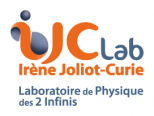
Abstract:
The implementation of Fabry-Perot cavities in gravitational-wave detectors has been pivotal to improving their sensitivity, allowing the observation of an increasing number of cosmological events with higher signal-to-noise ratio. Notably, Fabry-Perot cavities play a key role in the frequency-dependent squeezing technique, which provides a reduction of quantum noise over the whole observation frequency spectrum. In this context, linear three-mirror cavities could be of interest because of the additional control that they can provide. In this paper, we develop a complete model to describe the stability behavior and the properties of transmitted and reflected fields of a linear three-mirror cavity aiming to be used for design purposes. In particular, simulations are carried out to show the evolution of the characteristic « double-peak » as a function of cavity parameters, which is one of the key features of this system. We show that the double-peak shape is almost freely adjustable, either in terms of spacing between maxima, their relative height and their intrinsic width. This is made possible by changing the mirrors’ reflectivity coefficients and their spacing. However, the amount of achievable realistic configurations is limited by the stability conditions of the cavity. In particular, if the middle mirror is not close enough to the center of the cavity, it could be difficult to obtain a stable three-mirror cavity. Different geometries have been studied to obtain a stable cavity system.








